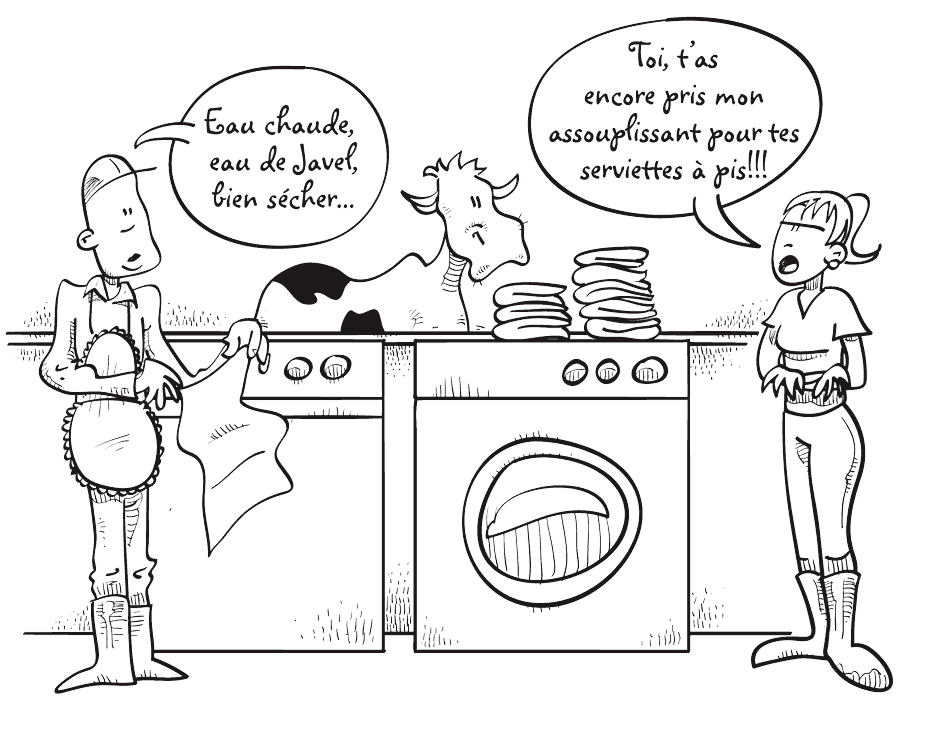Pre- and Post-Milking Teat Disinfection
Teat disinfection is a key part of udder infection prevention.
Teat disinfection is a key part of udder infection prevention by helping reduce the amount of bacteria on teats,
and should be done before and after milking. Teat wiping before milking is essential to complete the cleaning process.
It also stimulates the milk-ejection reflex and removes excess disinfectant.
Pre-Milking Teat Disinfection
Reduces environmental bacteria on the teat prior to milking.
Also reduces the risk of new infections caused by such bacteria, which often develop into clinical mastitis.
Conditions for Success
1.
Teats should be relatively clean, since surface dirt reduces the efficiency of disinfectant.
2.
Teats must be entirely submerged in solution.
3.
Teats must remain in contact with the solution for at least 30 seconds or as per the manufacturer’s instructions.
4.
Teats must be thoroughly wiped to remove solution. For best cleaning action teats should be wiped in a circular motion with particular attention paid to teat ends. Wiping stimulates milk let-down and reduces the risk of contamination by disinfectants such as iodine.
Teat Disinfection Using Treat Dip
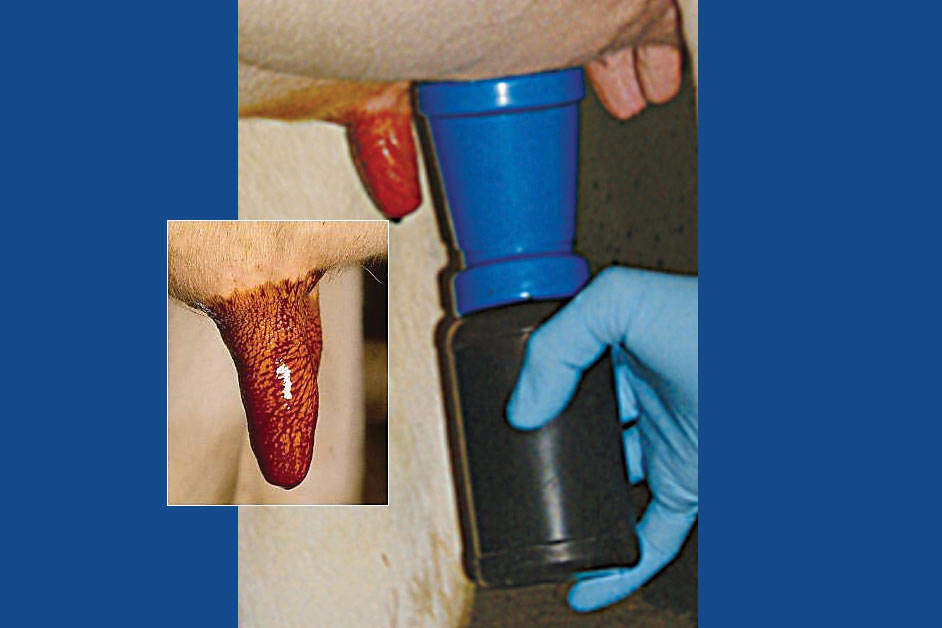
Teat Cleaning Using Disinfectant Solution
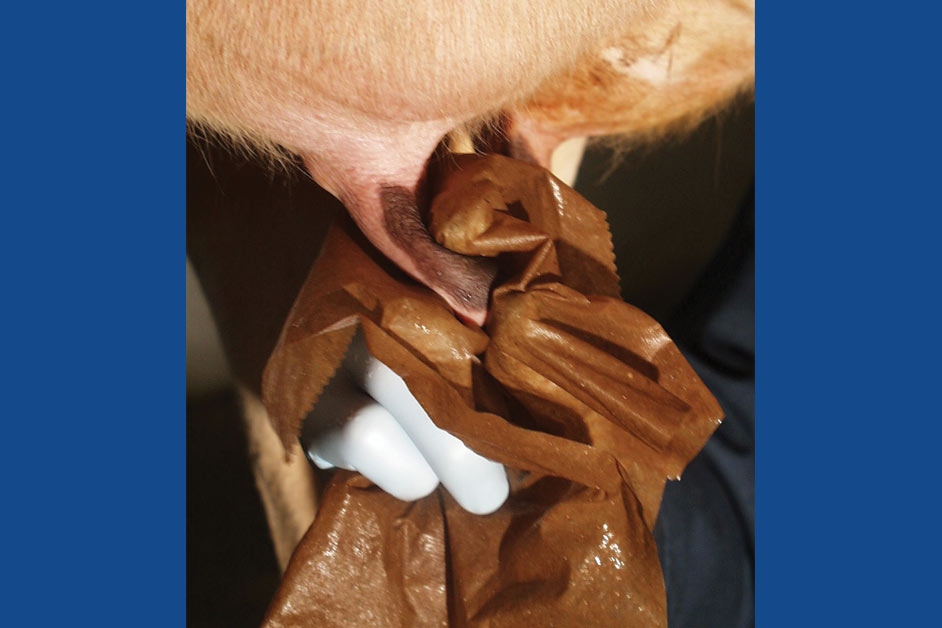
Tear Wiping
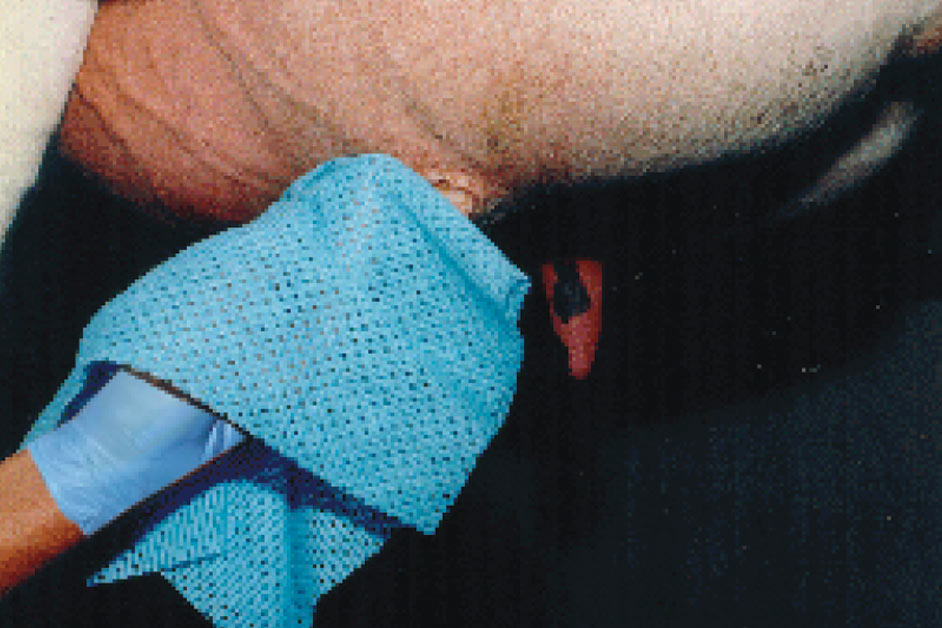
Post-Milking Teat Disinfection
Coats the milk film on the teat with an anti-bacterial solution.
Helps prevent the transmission of contagious bacteria such as Staphylococcus aureus.
Improves teat condition by combination of skin conditioner and disinfectant.
Conditions for Success
1.
Disinfectant must be applied as soon as possible after removing the milking unit.
2.
Disinfectant must coat the entire surface that was covered by the teat liner.
3.
Do not wipe disinfectant. In very cold weather, you should remove the excess disinfectant at the end of the teat to prevent cracking and freezing.
4.
Products should contain an approved germicide to eliminate bacteria and a skin conditioner, since sores can harbour bacteria.
Post-Milking Teat Dips Help Reduce SCC
A CBMQRN research review has found that nine out of nine studies showed a lower SCC in herds where post-milking disinfection was used.
Disinfectant Spraying Versus Dipping
The Disadvantages of Using a Sprayer:
Harder to coat the entire teat than using a teat dip cup
Requires more product and may increase iodine content of milk (iodine permeates skin)
WARNING
Spraying must be done from below the teat.
Caution: Lateral application will result in the far side of the teat not being covered.
To check the application area:
- Immediately following spraying, wrap a clean udder towel around the teat to absorb disinfectant.
- Unfold towel to ensure satisfactory distribution on cloth or paper.
Ensure the sprayer is in good working order and that the disinfectant container is full before milking.
Avoid nozzle contact with the ground or with contaminated areas.
Ensure regular up keep of spraying equipment.
Adequate spraying
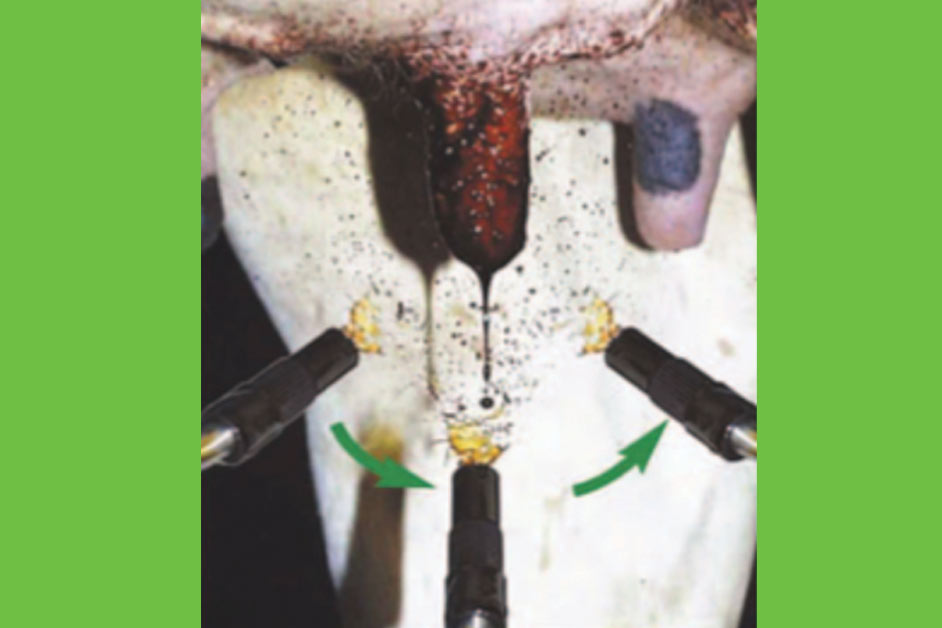
A teat well covered by disinfectant
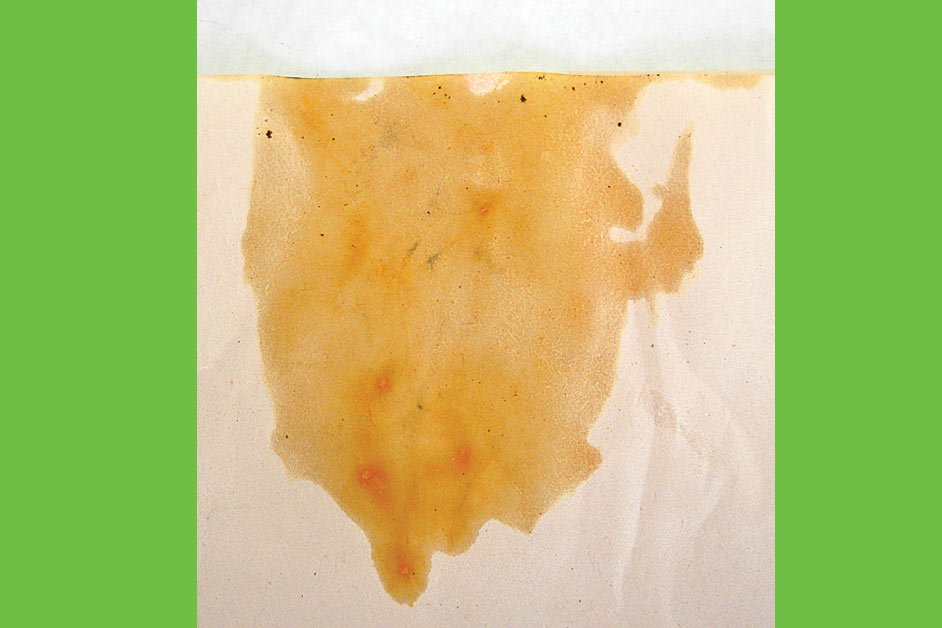
Inadequate spraying
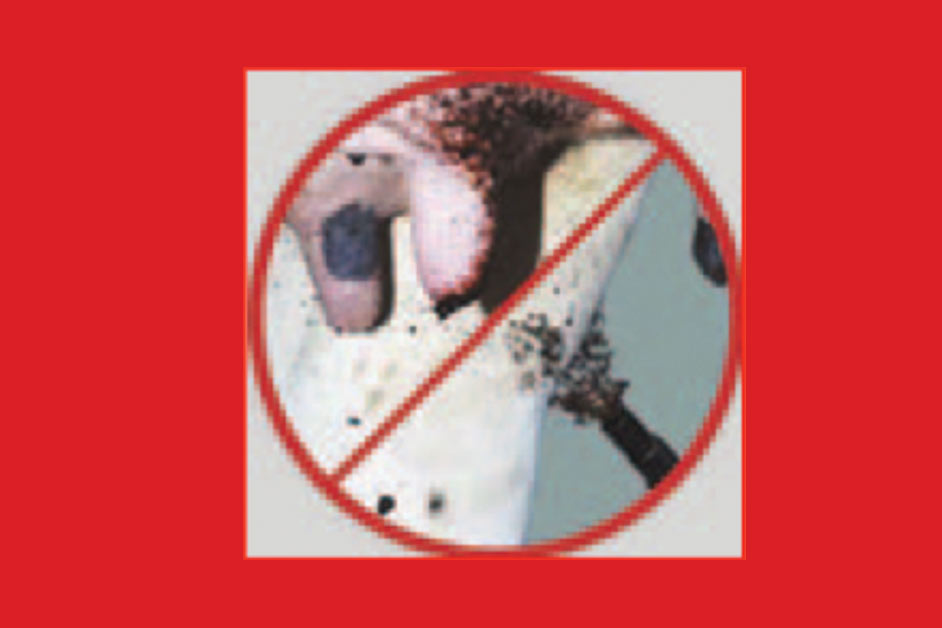
A teat poorly covered by disinfectant
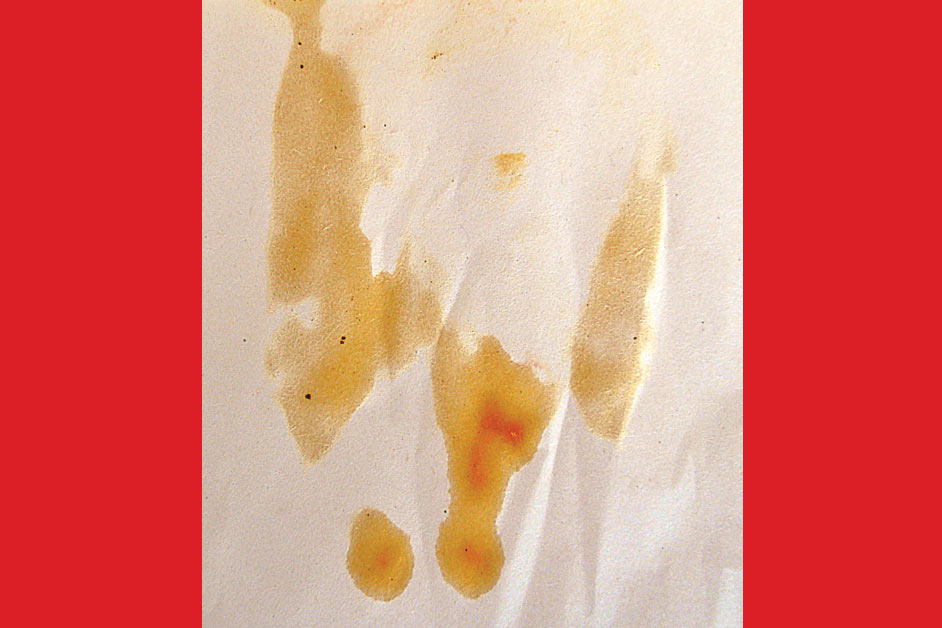
For an Effective Teat Dip
- Use only Health Canada-approved products, with a drug identification number (DIN)
- Observe expiry dates
- Avoid exposing products to freezing temperatures or to extreme heat
- Keep containers closed
- Do not dilute products
- Do not interchange pre- and post-milking disinfectant (keep containers clearly labelled)
- Do not put disinfectant back into their original containers
- Use only a non-return teat dip cup
- If disinfectant becomes cloudy during milking or is contaminated by bedding or manure, discard the remainder, carefully wash the cup and refill with clean solution
- Clean cup after each milking and refill with fresh disinfectant
- Keep cup with you or nearby for rapid application
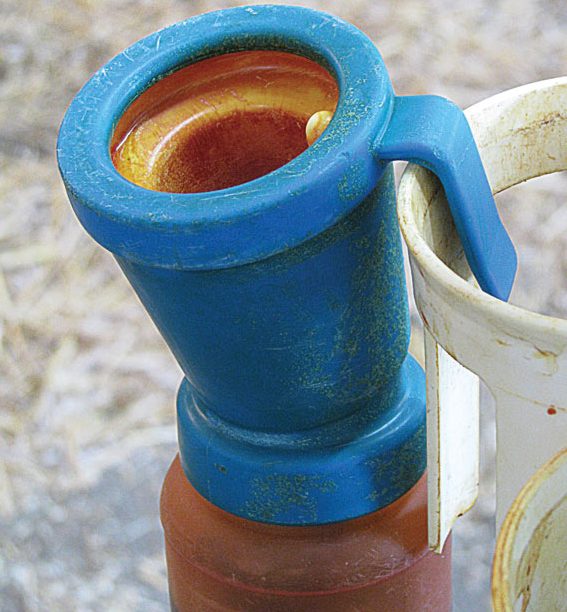
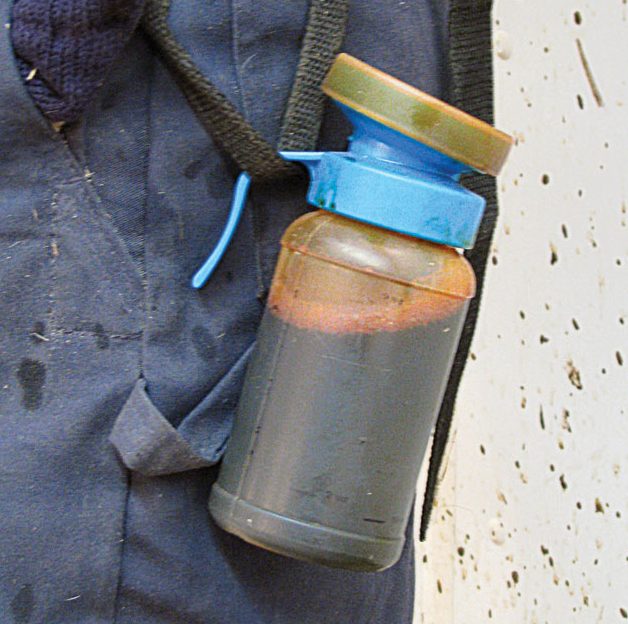
Disinfection Cloth Udder Towels
Pre-milking teat sanitization will be ineffective if teats are re-contaminated during wiping. Washable cloth udder towels must be free of bacteria.
Include at least two of the following three steps when cleaning cloth udder towels:
- Hot water wash (min. 70 ºC)
- Bleach
- High-temperature drying
- Choose a detergent appropriate to farm water quality.
- Ensure towels are thoroughly rinsed and dried before storing in a clean location.
